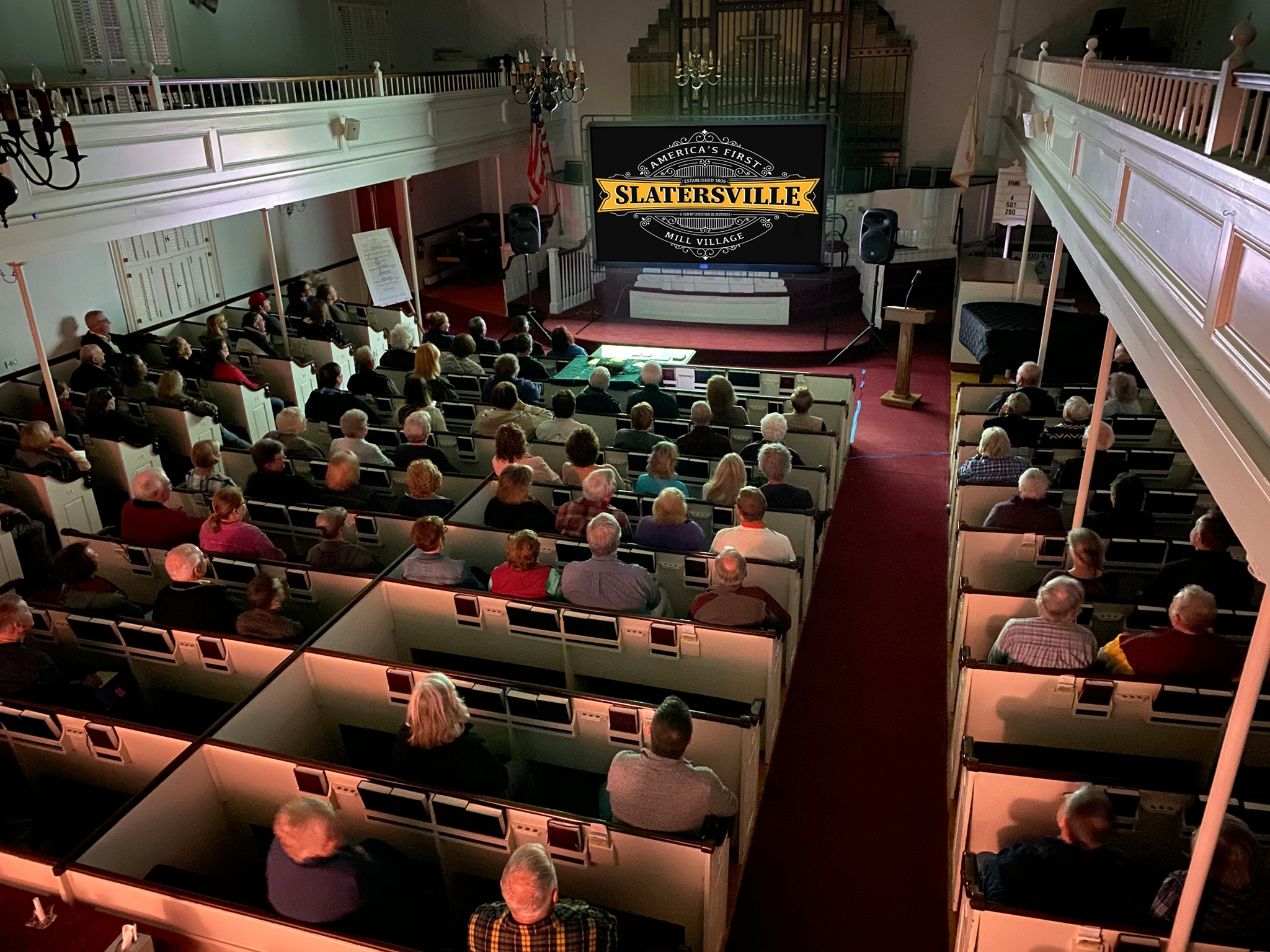NORTH SMITHFIELD – When director Christian de Rezendes held a pre-screening event last month for his documentary series Slatersville, America’s First Mill Village, it was before a packed room at Heritage Hall.
“I had to cut people off,” he said. “And that was only to see 25 minutes of this movie.”
For de Rezendes, who’s been working on the project for nearly a decade, the community interest was an encouraging sign. The screenings, the product of years of research, interviews and editing for the North Smithfield High School graduate, were aimed in part at raising curiosity about, and momentum around, his series, scheduled to be released in fall of 2021.
With two new grants secured this year for final editing of the material – one from Rhode Island-based foundation Felicia Fund , Inc., and another from FLAD, an organization out of Portugal – the future of his docu-series was looking bright.
But that all changed when efforts across the region to curb the spread of COVID 19 turned his life, and the lives of so many people across the globe, upside down.
“I thought, ‘Great, we’re riding this wave,’ and then everything comes to a screeching halt,” said de Rezendes. “I have a lot of support – but you think you’re finally going to get that break.”
The Slatersville pre-screening scheduled for this Sunday at the Museum of Work and Culture in Woonsocket has been cancelled, as has another screening in April at the Norwich Free Academy in Connecticut. Side efforts that have given the director enough financial stability to focus on finishing the project, such as gigs filming at events and weddings, have all been cancelled.
At first, like so many others, de Rezendes says he was reeling from the sudden changes.
But this week, he says he hopes he’s found a way to turn the sour lemons into lemonade.
The director released 45 minutes of the film online on Wednesday, March 18, and has plans to release more.
“The big reason I’m going to share this with the public is, people need to see something to remind them of the great community they have,” he said. “The film, throughout, emphasizes community in a variety of ways. I want people to be able to see their community in the progress of this film.”
de Rezendes said he came to the decision after speaking with a supporter of Slatersville, who lives in the Slatersville Mill.
“She said to me, ‘Now, more than ever, we need your film,'” he told NRI NOW. “I was flattered.”
The director noted that 17 of the people he’s interviewed for the project have since died.
“Given our current circumstances, which have no solid end in sight, I wanted everyone to have an opportunity to experience these pieces with their families, especially with their loved ones who are elderly,” de Rezendes said.
The first segment of the series, found here, covers the origins of the Slater family in Belper, England, the founding of the Slatersville Congregational Church and Sunday school, and the story of Rev. Harvey Eastman.
Far from a dry documentary, the high-quality production offers something for anyone in the Blackstone Valley, featuring both pictures of how the town once looked, and interviews of those who helped to influence life in the village.
And the director points out that it provides a stark contrast to current circumstances.
“This is an interesting thing, because while the film documents the community and how it has evolved, the saying is true, you don’t appreciate what you’ve got until it’s gone,” de Rezendes said. “People are going to appreciate certain aspects of the story more now.”
But de Rezendes notes that his production’s appeal extends well beyond northern Rhode Island.
“My job as a filmmaker is to universalize the topic,” he said. “Yes, the movie is done for the community, but Slatersville ends up being an example of a mill village that had these cultural events and adapted along the way.”
Shot in three countries, with funding from four, the documentary aims to personalize the history by using its subjects to convey why the information is important.
“I don’t just want to spoon feed people history,” de Rezendes said.
It’s an enormous undertaking, he notes, with at least nine individual stories connecting the larger picture.
“There’s nothing like this locally – not to this size,” de Rezendes said.
He says that most of his remaining editing work involves tying those separate stories together to create the larger picture.
With so much of life now in a state of flux, he says he’s still hopeful he can complete the project by fall of next year.

“Now that everything has been delayed, I’m not sure,” de Rezendes said. “This is going to get very interesting. The film has hit hurdles before. I’m going to forge ahead, and cut this thing no matter what.”
Since its release Wednesday, the first segment of the series has been viewed 254 times. The video can’t be downloaded, and de Rezendes notes that eventually, he will take it down. Another segment, he said, is slated for release next week, which includes footage of the town’s centennial parade.
He’s hopeful the work will provide relief to a community still shaken by events from the past two weeks – particularly older people now confined to their homes.
And he compares the decision to release portions before completion with the tearing down of fences when crowds became too large at the festival in Woodstock in the 1960s – a decision reflecting the value of safety over the dollar. Now, he notes, it is time for everyone in a community to do their part.
“In the last week, it felt like the world was coming to an end, so I had to switch gears and try to connect with people more,” de Rezendes said, noting that the pre-screening events may resume once things are more stable.
“The world has revealed other plans in the past two weeks,” he said. “I hope this raises people’s spirits in a very challenging time.”
To keep up with progress on Slatersville and view upcoming segments as they come out, follow the project on Facebook here.







